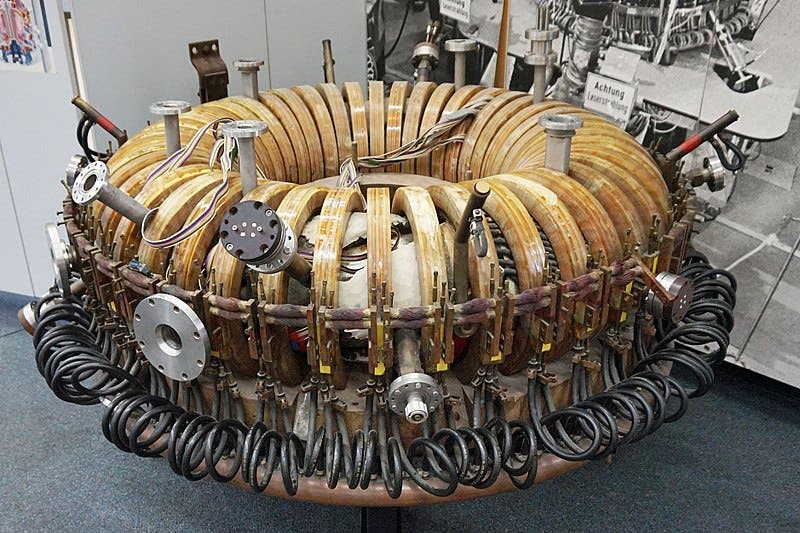The UK Government has announced that it will invest £220 million ($278 million) into the design of a fusion power station: the Spherical Tokamak for Energy Production (STEP).

Fusion power has been a dream of mankind for decades. Although no fusion plant has ever been able to produce more energy than it consumes, several governments and companies are investing heavily in the technology. The international ITER experiment is being built in southern France, and expected to be complete in 2035, while Wendelstein 7X is functional and reportedly working “as intended” — though it has yet to demonstrate the true potential of fusion power. The US is also in the process of building what it claims to be “the most advanced fusion reactor ever”, set for launch in 2028. The Chinese Fusion Engineering Testing Reactor could come online as early as 2035, and DEMO, a European successor to ITER, is planned for the 2050s.
The UK has now officially entered that race — tardy, but motivated to make up for lost time.
“Whether it’s sufficient, I don’t know, but it’s a real amount of money,” says Tim Luce, chief scientist at the world’s largest fusion experiment ITER, which is supported by an international collaboration. If the cash goes on prototyping the key elements of the eventual device, that should give Britain “a very good start”, he says.
[Also Read: What is the difference between fusion and fission]
Like the French and the US versions, the proposed British fusion plant would be a “tokamak”: a reactor which uses magnetic fields to confine and squeeze ionized gases (or plasmas) of deuterium and tritium in doughnut-shaped devices called tokamaks, until they fuse into helium. Meanwhile, the completed German reactor is a stellarator, which also uses magnetic fields for the same purpose. However, in the stellarator, the twisting magnetic field is produced entirely by external coils, whereas the tokamak also uses a field generated by the plasma current.
If all that sounds sci-fi, it’s because it pretty much is.
We still don’t really know if fusion power can actually work. In theory, it would generate electricity by using heat from reactors that fuse two atomic nuclei into a heavier nucleus.
However, actually achieving that process requires fuel and a confined environment that can support the high enough temperature and pressure to safely create the plasma. Stars do an excellent job at it — but recreating the conditions of the Sun into a nuclear reactor is, as you’d imagine, extremely challenging. Proposed designs aim to heat their fuels to tens of millions of degrees.
The UK’s proposed design would measure about 10-metres across, making it one of the smaller projects of this type. This is meant to save costs, but containing the temperature in a smaller space brings even more technical challenges. The French ITER design has been studied extensively, and most physicists are confident in this design — but the UK’s proposed design raises many more questions.
“This is a bold and ambitious investment in the energy technology of the future,” Andrea Leadsom, secretary of state for business, energy and industrial strategy, said in a statement.
“Nuclear fusion has the potential to be an unlimited clean, safe and carbon-free energy source and we want the first commercially viable machine to be in the UK,” she added.
Fusion power would provide more energy for a given weight of fuel than any fuel-consuming energy source currently in use. It could revolutionize energy production, as it would provide completely clean energy. However, whether or not this is commercially viable remains to be seen. It will take at least a few decades until we have a decisive verdict. It will be a long wait, but with multiple projects (both national and commercial) underway, we will have an answer nevertheless.






